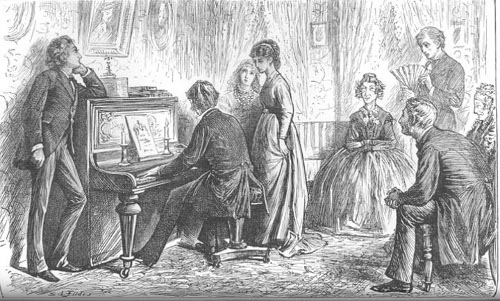
When Charles Dickens died in 1870, he was midway through composing a novel, The Mystery of Edwin Drood. The book was published without a conclusion; Dickens had completed 22 chapters and a general outline, but he nowhere identified the murderer.
This unfortunate state of affairs persisted until 1873, when a Vermont printer named Thomas James announced that Dickens had contacted him during a Brattleboro séance and asked his help in completing the novel. James and the ghost collaborated for weeks, with James slipping into a nightly trance and scribbling down the author’s dictation; when James flagged, Dickens would send notes of encouragement and explain that others in the afterworld were following the project with interest.
The completed novel, attributed to “the Spirit-Pen of Charles Dickens, through a Medium,” became a bestseller in America but was largely derided in England for its American tone and inept prose. An excerpt:
As for Stollop, it is safe to assert that there was not a happier man in London than he, and it would occupy no small space to relate the thoughts which filled his mind till the first rays of the morning sun peeped through the crevices of the shutters, throwing light on everything, except the mind of Stollop, as to how the night’s adventure would affect his perspective future, and how long it would be ere he should lead the beautiful young lady to the altar.
The book found an unlikely supporter in Arthur Conan Doyle, who had turned to spiritualism after a series of tragedies in his own life. “If it was a true communication,” he wrote, “it must have been intensely galling to the author that his efforts should have been met with derision. There would, however, be a certain poetic justice in the matter, as Dickens in his lifetime, even while admitting psychic happenings for which he could give no explanation, went out of his way to ridicule spiritualism, which he had never studied or understood.”
